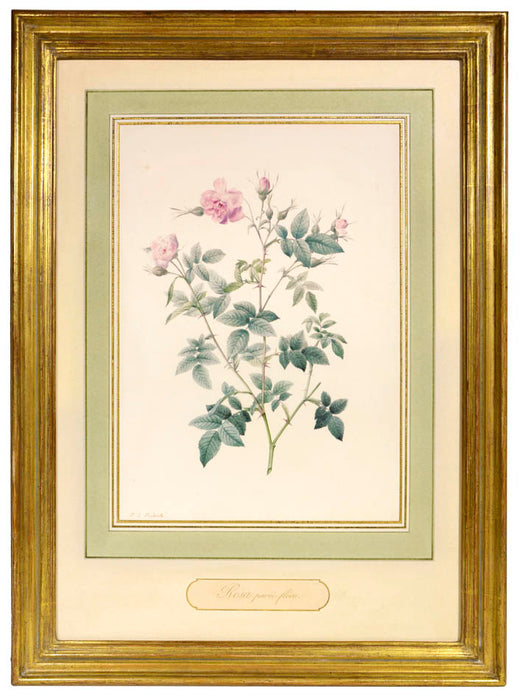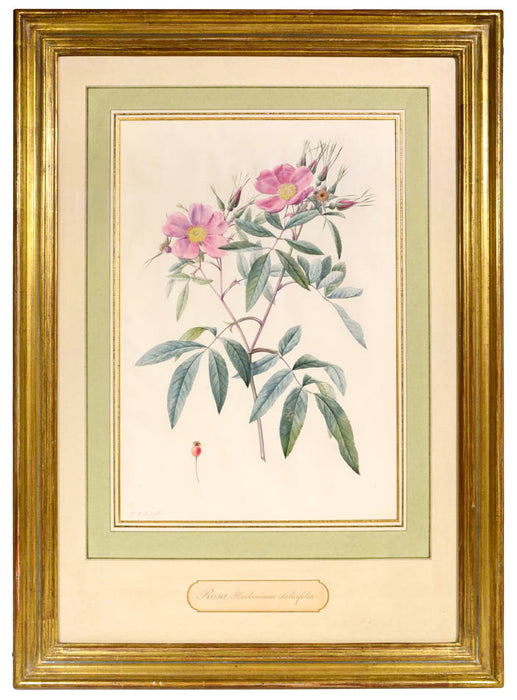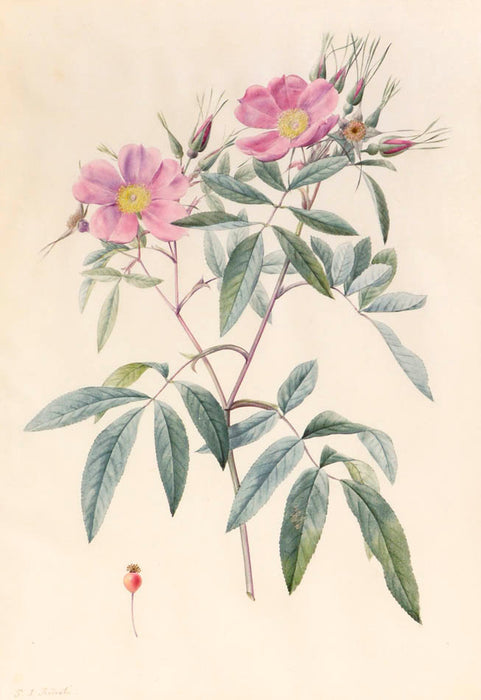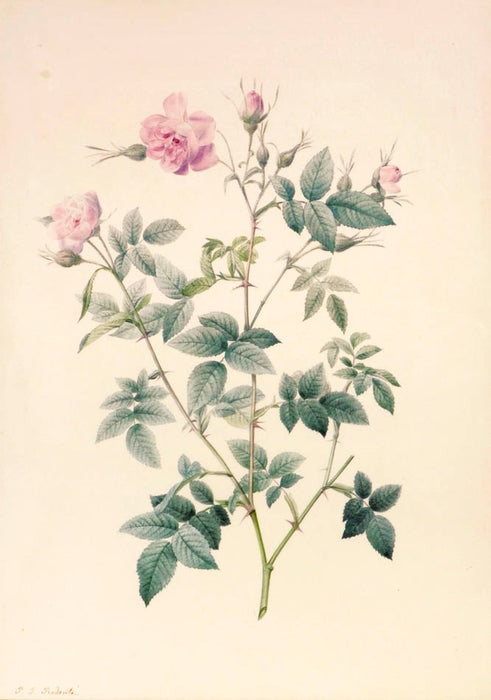
Rosa parvi-flora.
[c.1828].
Redoute's patrons included two Empresses and two Queens, and his prodigious talents placed him at the centre of French court life, both before and after the Revolution. He was appointed drawing master to Marie Antoinette, yet despite his connections to the Royal family he survived the Terror and went on to become the court and flower painter to Empress Joséphine. It was because of her patronage that Redouté undertook Les Liliacées, which together with Les Roses, constitute the artist's greatest works. Although Joséphine had died three years before the publication of Les Roses, it was the unequalled collection of roses on her estate at Malmaison that provided the artist with his inspiration.
Exhibited:
Paris, Musée de la Vie Romantique, Jardins romantiques français, du jardins des Lumières au parc romantique 1770 - 1840, 2011, no. 78;
Haarlem, Teylers Museum, Redoute's Roses, 2013, pp. 135 and 161, under Les Roses.
Watercolour over traces of black chalk on vellum, within gold framing lines; signed in pen and brown ink, lower left: P. J. Redouté.; 385 x 270 mm. (15 1/4 x 10 5/8 in).
Provenance
Delivery
We offer secure and express delivery on all local and international orders of rare books, maps and prints placed through this website.













